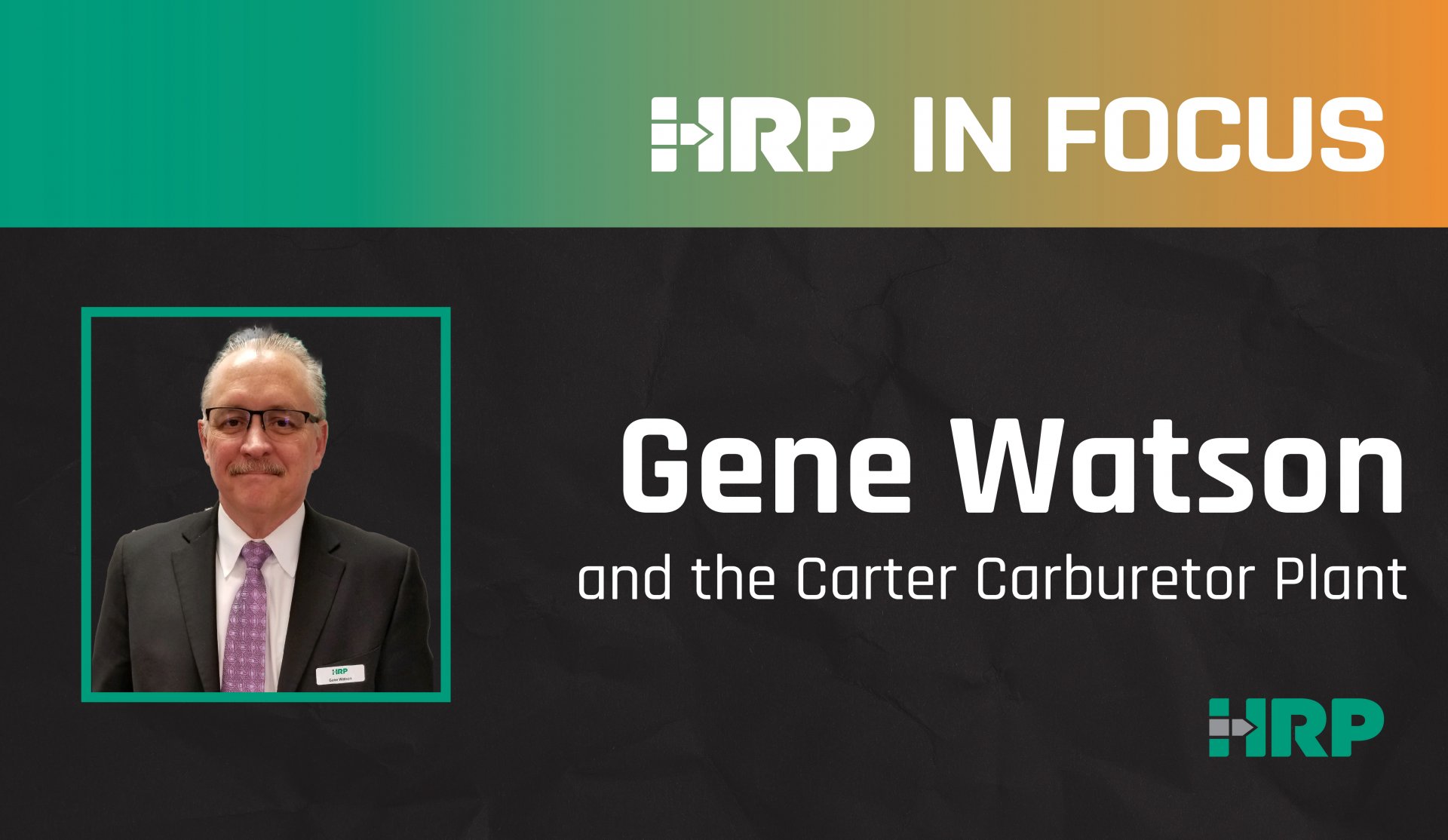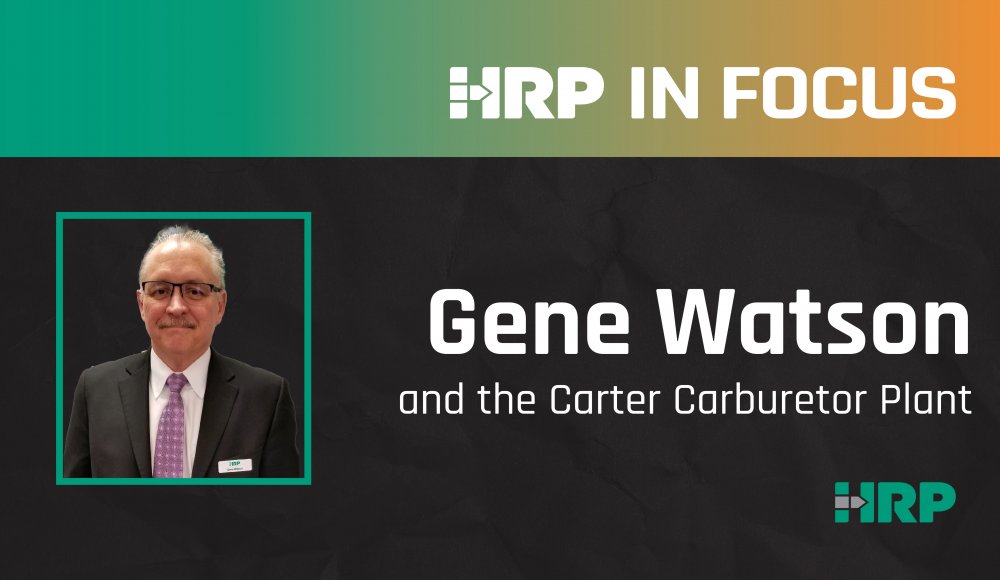HRP in Focus: Gene Watson and the Carter Carburetor Plant
March 28th, 2024

In his over 30 years of experience conducting hazardous, toxic, and radioactive investigations, environmental site investigations, and developing remedial action plans, HRP’s Gene Watson has seen a lot of what there is to see in the field. Gene is the Regional Manager of HRP’s St. Louis, Missouri office – a smaller office staffed by four seasoned veterans of the industry.
“Everyone that works in the St. Louis office has at least 25 years of experience, and when it comes to consulting, you need that background,” says Gene. “You need people who can think on their feet out in the field and assess a situation and be able to adapt. That’s where our expertise comes in handy”
Over the course of his career, Gene has worked on several monumental projects – some of which have made headlines – including Times Beach, several hurricane responses, the BP/Deepwater Horizon Mississippi Canyon-252 (MC-252) oil spill, and the Taum Sauk Upper Storage Facility dam failure.
When Gene joined HRP, he was in the middle of a $36 million Superfund project at the former site of the Carter Carburetor plant—an automotive relic of the past marred by contamination. The plant consisted of several connected multistory manufacturing, testing, office, and warehouse buildings that contained approximately 480,000 square feet of space. During its operational life, the plant manufactured carburetors for gasoline and diesel-powered engines. In 1984, the plant was closed and much of the equipment was dismantled.
The project is memorable for several reasons. The first being that Gene ran this project as the Project Manager from day one, and was helping move things along over the course of 16 years.
The challenges of this project were abundant. Decades of neglect had left the site contaminated with hazardous substances like poly-chlorinated biphenyls (PCBs) and trichloroethylene (TCE). What makes this project memorable for Gene wasn’t just the technical intricacies involved but the opportunity to make a tangible difference in people's lives. The site's proximity to the Boys & Girls Club of St. Louis presented a poignant reminder of the stakes involved. Gene took on the responsibility of bridging the gap between regulatory demands and community needs, hosting and participating in regular meetings to ensure transparency and trust with the community.
Overcoming skepticism and distrust, Gene and the EPA forged strong bonds with the community. Through their efforts, they not only navigated the web of environmental regulations involved with the project, but also ensured that the voices of the marginalized were heard and their concerns were addressed.
“With the Carter Carburetor plant, and its proximity to the Boys & Girls Club, I was working with a community that did not feel heard, and I was able to develop a good working relationship with the community, and that’s certainly a rewarding aspect of the job. It's very rewarding and you feel like you’re making a difference.”
For Gene, the most rewarding aspect of the job was witnessing the impact of his work on the lives of individuals and their communities. As contaminated soil was remediated and hazardous materials safely disposed of, Gene saw firsthand the power of environmental remediation.








